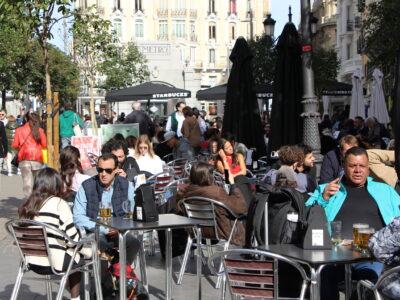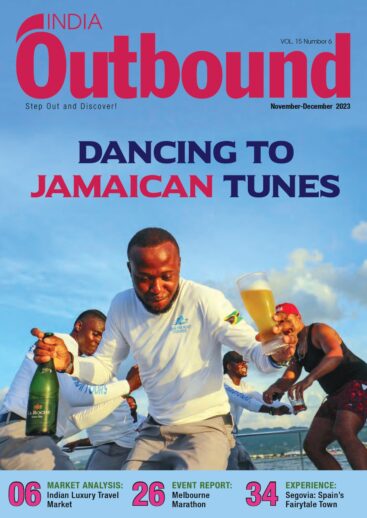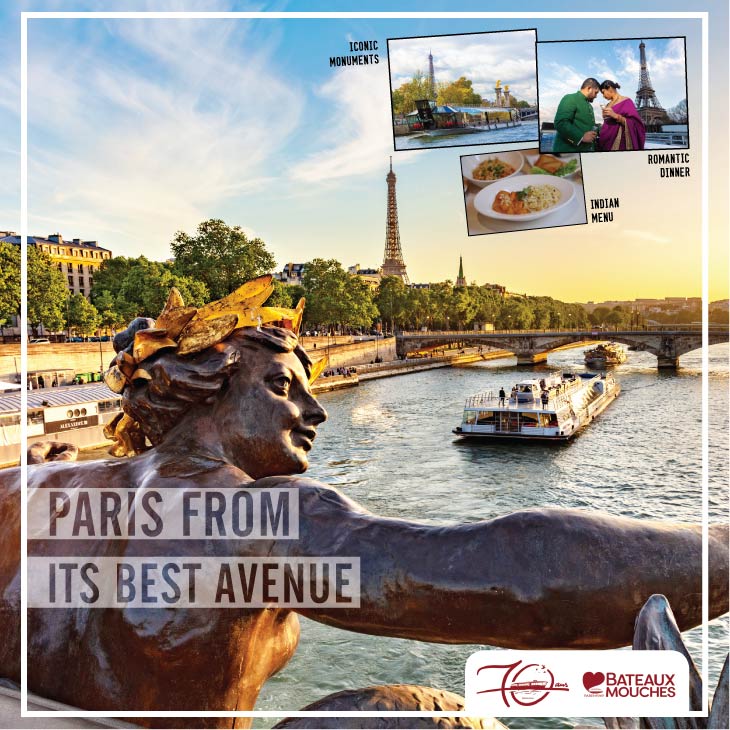Destinations and tourism sites the world over are increasingly addressing children in their communications as they become key influencers in decisions on family vacations.
Last year, when Mumbai-based senior television executive Lancelot Fernandes and his wife Sujata Goel, a communications specialist, were planning a vacation overseas, very early in the discussion, they noticed that the talk was being dominated by their two children, excited about going for a long-awaited family vacation to Europe. They say they like to involve the children in decision making as it helps keep them engaged and excited about the vacation. It builds a sense of curiosity and anticipation for learning about different cultures, cuisines and experiences, they say.
‘‘Children play a very important role in planning a vacation. It begins with them giving options of where they would like to go and that is a blue sky activity – they pretty much come up with any or all the destinations that they would like to visit. This gives us a good idea of what they would like to do. The narrowing down begins over destinations that cater to the interests of both kids. Up until now, the destinations have had a good mix of activities including theme parks and sightseeing,’’ says Sujata Goel.
Thus, at each place visited by the Fernandes family, adequate care had been taken to ensure that children have as much fun as the adults, if not more. Be it taking the big roller-coaster rides at Disneyland Paris or trying their hands at Segways in Spain. ‘‘The most memorable trip for the entire family was Switzerland. While it was very hectic, they were completely up for it. That’s because the destination offered just about everything a good holiday is made of. They enjoyed the snow, the sitting around in cafes, the train journeys, paragliding, food, some shopping, cruising, etc. In general, while visiting Europe, they loved the train journeys and the countryside, they liked the cafe and food culture, Disneyland as well as the visit to stadium in Barcelona to watch a Champions League game,’’ she says.
Earlier this year, just before the coronavirus pandemic hit India and the international flights were banned, Gurusher Bahadur Singh, a 44-year-old captain in the merchant navy, took his family to Dubai and Abu Dhabi for a quick break. Besides doing the must-see sites such as Burj Al Khalifa, the world’s tallest building, Singh and his family went to Ferrari World, an amusement park in the emirate.

Entertainment parks are a must on a family vacation itinerary
“Excited as always, we were just waiting to see the tallest building in the world to imagining the rollers coasters at the Ferrari World. So, early in the day, we headed to the Ferrari World that my son had been so eager to visit. Indeed, it was breathtaking to see the roller coasters there that my son had been dying to get on. It was a little scary for me, but my son enjoyed it tremendously and we sat on quite a few rides, after which we went to Warner Brothers’, which was also worth visiting for its rides for the families and of course dancing with characters that have mesmerised children, including me, for long,” says Singh.
‘‘Children feel excited always especially when it’s an international trip for them. It makes them more confident and aware as well as more open minded. My son is always excited as he finds different cultures and languages to be interesting. So, we as parents give chance to our son to choose the place he wants and then tell him to research via books or the internet. So last year, when he suggested that we visit Dubai, we told him to come back to us with details of what we could do there and the best time to visit,’’ adds Singh.
Pavneet Kaur Sethi is a 28-year-old baker from Chennai. She also took her children recently to the UAE and says that she encourages the children to participate in the planning of the vacation. ‘‘Usually when a family is planning a vacation the parents are always the decision makers. However, children should be given the opportunity to choose their desired destinations thereby giving them a sense of responsibility and building their interest. Moreover, children are more excited and have a higher response rate than adults. They are also generally more satisfied about conditions at the destination than the adults. Moreover, they start looking for places and or activities that interest them. Something that they must be wanting to do at a particular place. By giving them this opportunity parents fulfil their longing and at the end it makes the trip a worthy one for both parents and children,’’ she says.
Indeed, children are increasingly at the centre of most family travels in today’s world. What’s more is that with easier access to information online or digitally through smartphones, the children are no more dependent upon their parents for information on the options available, the latest offerings or just the best marketing campaigns launched by destinations and tourism sites alike.
Another key source of information about what’s new in tourism are other children who may have travelled to some places or even seen advertisements and social media posts. Thus, as children become increasingly aware of the latest developments armed with this information, they are increasingly speaking up about what they want to do during the next family vacations.
And even where the children may be too young, increasingly the parents are selecting those destinations and sites that offer activities or attractions for the children as well. Indeed, a multicountry survey conducted by consultancy North Star Research Partners last year for travel company Expedia says that the Generation Alpha (those born after 2010) as well as the Generation Z (born between 1995-2010) have been making their presence felt increasingly in the travel patterns of families. This is the first generation born entirely within the 21st century and is completely digitally native and tech-savvy from a very young age. It is estimated that globally, Generation Alpha would be two billion strong by 2025.
The survey says that even though members of Gen A may be young, they are already influencing the travel decisions that their parents and families make. The survey’s key findings were:
Fun comes first: There are a number of elements that travellers consider when they’re planning family vacations and the activities, experiences, and attractions they’ll partake in while on the trip. But first and foremost comes making sure that the family is in high spirits. As many as 95 pc of respondents agree that “keeping their family entertained and happy is of the utmost importance” when planning a trip, and travelers are most likely to seek out theme parks and attractions (74 pc), water activities (67 pc), and outdoor activities (55 pc) to keep their families entertained.
Convenience trumps price: It’s not particularly surprising to hear that budget is top of mind for those planning family travel. Eight out of 10 respondents agreed that budget is a primary factor when researching and planning a trip. But convenience is perhaps even more important. A full 52 pc of travellers said they choose their transportation based on convenience, compared to 34 pc who said they choose based on what’s most affordable. Meanwhile, accommodationrelated decisions are most likely to be based on location (41 pc), family needs (39 pc), and price (36 pc). Showcasing convenience, while backing it up with an attractive deal, is key to attracting these travellers.
Children play a role in planning: An overwhelming 80 pc of respondents said they talk about travel with their Gen A child or grandchild at least somewhat frequently, and 43 pc said that these children influence family travel decisions. Generation Alphas are most likely to influence the destination chosen (64 pc) and the activities on the trip (57 pc) — though adults make the final decisions.
Family travel decisions are shaped by multiple channels: For most families, the travel planning process is a collaborative one — but children and their parents and grandparents are obviously influenced by different messaging. According to their parents and grandparents, imagery or information that show kid-friendly activities and attractions and travelrelated imagery or information they see on television have the most sway over these younger travellers. Meanwhile, parents and grandparents are most likely to make their decisions based on travel review sites and online travel agencies, recommendations from family, friends, and colleagues, and search engine results. In order to appeal to both older and younger groups, messaging should contain appealing imagery, deals, and informative content, but should also be interactive and highlight fun and entertainment.
‘‘Children have always played a very important role in family holiday planning. The holiday planning revolves around the school holidays and the vacations of the children. And also, a lot depends on the child’s preferences and the destination is decided keeping in mind whether the child would enjoy or not. So even after the pandemic, children would really play an important role as they would want to travel after being at home for almost half a year,’’ says Riddhi Roy of Dolphin Travels, a Kolkata-based travel firm.
In view of the tectonic shifts in where the decision making centre of the families lie nowadays, it is not surprising at all that many destinations and tourism their primary objective. Campaigns of a number of destinations in India have been designed around and aimed at vacation options for children. ‘‘Children can play a huge role as influencers. In many families, holidays destinations are selected by children. The fact that we see an increase during the summer season in India is because holidays are all planned around children’s school vacations. We have made efforts to influence this segment and collaborated with brands that are specifically targeted for children. The strategy behind such collaborations is to educate children about Macao and its attractions and make them aware of things to do when visiting Macao,’’ says Arzan Khambatta, head of Macao government tourism office in India.
‘‘To make it a complete offering for the entire family, Macao offers wide entertainment for kids and families. We have different museums, fun zones that families can go to. Also, there is Panda Pavilion that is enjoyed by families. Macao also has a very good science center that is currently under renovation but will soon be open for families to explore and learn,’’ adds Khambatta.
For long, France had been seen as a destination for adults, with romantic getaways topping the list of attractions of France as a destination for Indian travellers. But, the country has a rich offering for children as well as it has upped its communication on opportunities for children.
‘‘Recent trends indicate that children’s preferences are often the driving factors in deciding a destination. This is most certainly so for Indian families! Destinations today are engaging in child-oriented strategies that include showcasing touristic offerings that may appeal to children. This trend has also been observed not only with destinations but all services associated to the tourism industry such as airlines, hotels, sightseeing etc. As far as France is concerned, most of our destinations include on their websites, activities specifically for children or experiences that could be enjoyed with families. These include kids clubs, specifically designed rooms, activities for families to experience together et al,’’ says Sheetal Munshaw, director of Atout France (India), the French national tourism promotion organisation.
‘‘As an attraction park, created in 1989 and inspired from the famous comic book Asterix the Gaul, children are of course at the center of our target visitors. The park is made for family fun, especially for the kids but also to awake the child in each one of us. Parc Asterix is the second most visited attraction park in France, with over 2.3 million visitors last year and 51 pc of our visitors are families with kids,’’ says Frederic Gouguidis, International sales director of Compagnie des Alpes, a French tourism giant which owns and runs Parc Asterix, besides a host of other sites.
Gouguidis says that the Parc had already shifted its marketing activities by keeping the children at its centre way back in 2014. ‘‘We launched a new familyoriented strategy with the creation of a new kid zone in the middle of the park La foret d’Idefix with five attractions dedicated to the kids. From then to 2019, we have created one new attraction or show each year and they are all entirely family oriented. In all, we now have 13 kids-oriented-attractions and 22 familyoriented-attractions,’’ he says.
‘‘There is a craze for Legoland in Kuala Lumpur, also DisneyLand and animal shows in different countries have gained more importance. I have noticed that a lot of vacations are animal centric. Parents usually ask if their children can spend time with any famous animal of that country and even aquariums and museums gain a lot of importance,’’ affirms Roy of Dolphin Travels.
It’s not the destinations that have spotted the opportunities in targeting advertisements at children, several tour operators have also launched itineraries for family vacations, with a focus on what the children desire. “Children have emerged as the protagonists in family vacations with the combined force of peer pressure and ‘pester power’, being a powerful driver in holiday decisions. Keeping children engaged is key to ensuring a relaxed time for family bonding while on holiday. To leverage this strongly emerging potential, we had launched an engaging series of ‘Theme Park Tours’, a unique concept designed to delight children with fun and exciting experiences centred around theme-parks across the globe. While a large part of the activities are aimed at kids, amusement parks have now evolved into all-inclusive holiday destinations for the family, with hotels, spas and a host of facilities included,’’ says Rajeev Kale, president of Thomas Cook (India), the largest tour operator in the country.

Outdoor activities like sailing and cycling are popular with kids
Atout France’s Munshaw says that as a tourism board, Atout France promotes and markets the concept of familyfriendly France showcasing the versatility of the destination, its multitude of family friendly offerings and promoting key attractions, hospitality partners and experiences that make for fun, memorable and family centric activities. ‘‘We work closely with professionals in India to create packages and facilitate them through educationals, joint marketing initiatives, influencer campaigns to better promote France as a family destination,’’ she adds.
With a sharp rise in the use of smartphone and extremely low data costs, most children in middle class families are now equipped with their own smartphones which they use not just to stay in touch with the family and friends but also to learn about tourism destinations. As a result, destinations are increasingly using smartphones to communicate. ‘‘Applications on smart phones are a useful tool to connect with kids. Most adolescents have their own phones and connecting with them through this platform that they are familiar with is an effective tool of destination marketing. Interactive applications generate engagement and also retain interest. Virtual tours, discoveries of prominent sites create an aspiration to visit,’’ says Munshaw.
It is important for the destinations to make the offering comprehensive and compulsive for the entire family, instead of just focusing on the children and their activities.
Parc Asterix knows a trick or two in this trade. Accordingly, each year in April, the Parc launches a special offer with free entrance for the children between 3-11 years of age. Last year it also launched special Christmas festivities, aimed at attracting more families and children to spend their vacations at Parc Asterix. And next year, it will also broadcast a cartoon on French TV, starring Idefix and showing his adventures with his fellow dog friends.
PARC ASTERIX OPENS LES QUAIS DE LUTÈCE HOTEL
In order to enhance the appeal of the Parc Asterix as well as to enable children and families to remain immersed in the ambience of the Gaullic village, the company added hotels on the site of the park itself. ‘‘We have launched our new destination strategy and created two new themed hotels in addition to our existing hotel. All the three hotels are located just a few steps from the park with a special entrance to the park and a preopening in the morning. Each hotel has 150 family rooms for four to five persons per room with a separate sleeping area for the children,’’ says Gouguidis.
Les Quais de Lutèce Hotel recreates the banks of River Seine, presented by noted French set designer Thierry Retif who has rebuilt ambience of days gone by. The hotel comprises 150 rooms spread over several buildings. Now the total room capacity at the Parc Asterix stands at 450. The hotel includes a 300-seat restaurant offering a buffet and table service, as well as a bar. It is priced competitively at about EUR 91 per person per night, based on two adults and two children in a room for four people.
On the outskirts of the Park, La Cité Suspendue has 150 rooms, spread over 3 hamlets: The Potters’ Village, the Artists’ Village and the Druids’ Village. The buildings of this hotel are made entirely of wood and offer a warm and friendly atmosphere that continues outside, as the villages are linked to each other by walkways on stilts. Another 3-star property, Les Trois Hiboux, offers a unique stay in the heart of the forest. The hotel has been completed renovated and provides 150 rooms of 25sqm. Specially designed for families, they offer a playroom for children and box beds separate from the parents’ room. All visitors staying in one of the hotels may access the Park 30 minutes before the official opening time. Astérix and Obélix will also be in the hotels to greet visitors at breakfast.



























